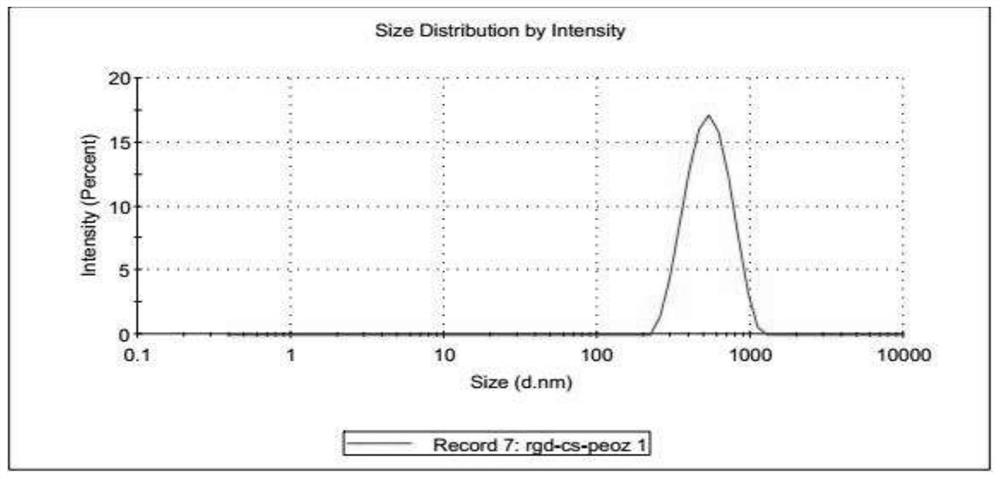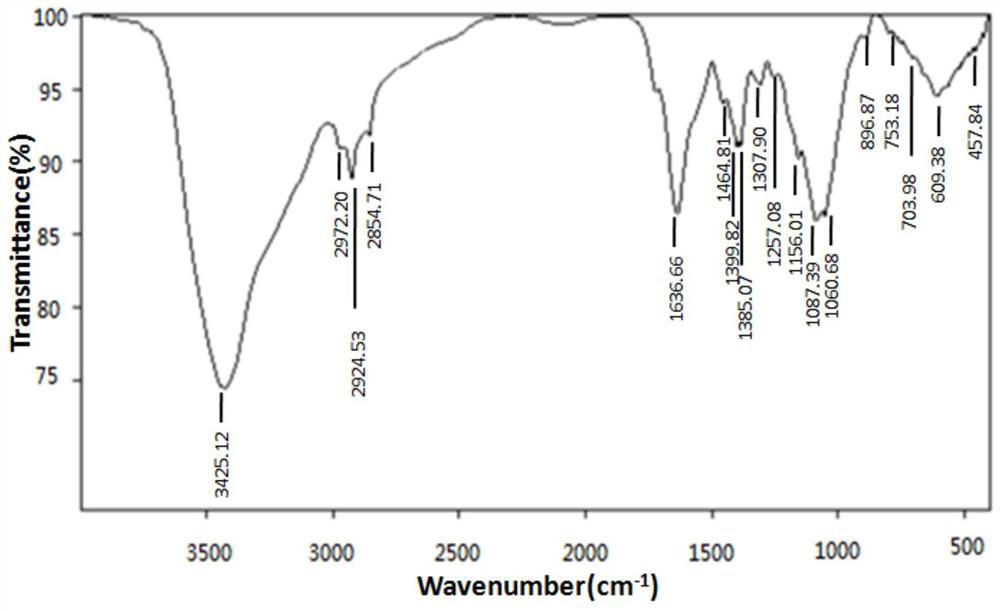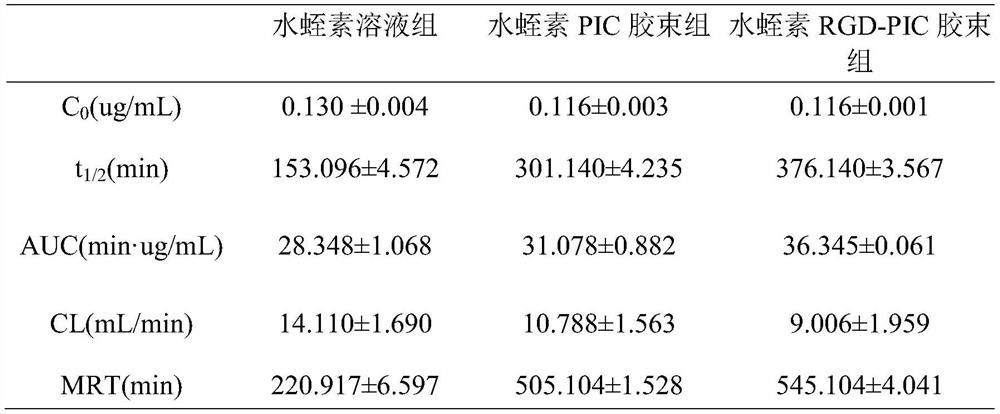Thrombus targeting long circulating polycation micelle, and preparation method and applications thereof
A polycationic, long-circulating technology, applied in the field of medicine, can solve problems such as unreported, and achieve the effects of reducing immunogenicity, prolonging in vivo action time, and obvious thrombus targeting.
- Summary
- Abstract
- Description
- Claims
- Application Information
AI Technical Summary
Problems solved by technology
Method used
Image
Examples
preparation example Construction
[0029] A method for preparing a thrombus-targeted long-circulating polycationic micelle, which specifically comprises the following steps:
[0030] Step 1. Take anhydrous EOz and place it in a round-bottomed flask, add 80-250 mL of anhydrous acetonitrile, add 3-bromo-ethyl propionate and potassium iodide according to the molecular weight of the polymer to be synthesized according to the ratio of monomer and initiator, The mass ratio of anhydrous EOz to 3-bromo-ethyl propionate is 1~5:1, and the molar ratio of 3-bromo-ethyl propionate to potassium iodide is 1:0.5~2, stirring under nitrogen protection, 80~120 The temperature is heated to reflux for 24-48h, and the stirring speed is 300-800rpm. After the reaction solution is cooled to room temperature, potassium hydroxide methanol solution is added to terminate the reaction. The molar ratio of potassium hydroxide to 3-bromo-ethyl propionate is 2-5 : 1, 80-120 ℃ heating under reflux for 12-24 h, the organic solvent in the reaction...
Embodiment 1
[0043] Step 1, Synthesis of HOOC-PEOZ-OH
[0044] Take 10g of anhydrous EOz and place it in a round-bottomed flask, add 80mL of anhydrous acetonitrile, add 3-bromo-ethyl propionate and potassium iodide (mol ratio 1:0.5) according to the mass ratio of monomer and initiator to be 1:1, Stir under nitrogen protection (300rpm), heat under reflux at 80°C for 24h, and after the reaction solution is cooled to room temperature, add potassium hydroxide methanol solution to terminate the reaction (the molar ratio of potassium hydroxide to 3-bromo-ethyl propionate is 1 : 1), heated to reflux at 80 °C for 12 h, removed the organic solvent in the reaction solution by rotary evaporation at 40 °C, reconstituted with 10 mL of dichloromethane, precipitated with 200 mL of cold ether, and filtered with suction. The obtained solid was dissolved in 10 mL of water, placed in a dialysis bag with a molecular weight of 8000, dialyzed in deionized water for 24 hours, and freeze-dried for 1 day to obtain...
Embodiment 2
[0055] Step 2, Synthesis of HOOC-PEOZ-OH
[0056] Take 15g of anhydrous EOz and place it in a round-bottomed flask, add 100mL of anhydrous acetonitrile, according to the mass ratio of monomer and initiator to be 2:1, add 3-bromo-ethyl propionate and potassium iodide (mol ratio 1:1) , stirred under nitrogen protection (400rpm), heated and refluxed at 100°C for 36h, and after the reaction solution was cooled to room temperature, potassium hydroxide methanol solution was added to terminate the reaction (the molar ratio of potassium hydroxide to 3-bromo-ethyl propionate was 2:1), heated to reflux at 100°C for 12h. The organic solvent in the reaction solution was removed by rotary evaporation at 50°C, redissolved with 12 mL of dichloromethane, precipitated with 250 mL of cold ether, and filtered with suction. The obtained solid was dissolved in 15 mL of water, placed in a dialysis bag with a molecular weight of 10,000, dialyzed in deionized water for 36 h, and freeze-dried for 1 d...
PUM
| Property | Measurement | Unit |
|---|---|---|
| particle size | aaaaa | aaaaa |
| polydispersity index | aaaaa | aaaaa |
Abstract
Description
Claims
Application Information
 Login to View More
Login to View More - R&D
- Intellectual Property
- Life Sciences
- Materials
- Tech Scout
- Unparalleled Data Quality
- Higher Quality Content
- 60% Fewer Hallucinations
Browse by: Latest US Patents, China's latest patents, Technical Efficacy Thesaurus, Application Domain, Technology Topic, Popular Technical Reports.
© 2025 PatSnap. All rights reserved.Legal|Privacy policy|Modern Slavery Act Transparency Statement|Sitemap|About US| Contact US: help@patsnap.com



